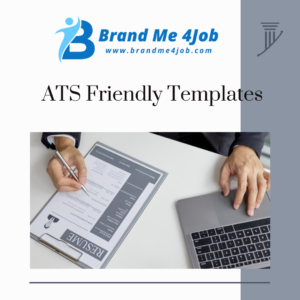Creating a resume that showcases your potential for growth is crucial when aiming for career advancement. “Building a resume for career advancement” involves focusing on skills, achievements, and qualifications that demonstrate your capability and readiness for the next step in your professional journey. This guide will cover essential strategies for crafting a resume that will capture the attention of hiring managers and help you stand out from the competition.
Click here, for building a Resume for Career Advancement
1. Define Your Career Goals:-
When building a resume for career advancement, it’s important to start with a clear understanding of your career goals. Knowing what role or level you aim to achieve will guide you in tailoring your resume to highlight the experiences, skills, and accomplishments most relevant to your target position.
Identify Your Desired Role:
Consider the specific role or position you’re aiming for and the skills it requires. Understanding your goals will help you determine which experiences to emphasise and which ones to minimise. For example, if you’re seeking a managerial role, focus on leadership and project management experiences.
Align Your Resume with Long-Term Goals:
Tailor your resume to showcase your readiness for your desired career path. Highlight experiences that align with your long-term goals, even if they are only indirectly related to the role you’re currently applying for. This approach demonstrates to hiring managers that you have the foresight and commitment to grow within the company.
2. Craft a Strong Professional Summary:-
A well-crafted professional summary is one of the most effective ways to communicate your potential for advancement. This section, typically positioned at the top of your resume, gives hiring managers a quick snapshot of your career trajectory, strengths, and key skills.
Focus on Core Strengths:
Identify and summarise the core skills and attributes that make you a valuable candidate. Include keywords related to leadership, project management, technical expertise, or any other skills crucial for the role you’re targeting.
Highlight Your Career Goals:
Incorporate a sentence that briefly mentions your career goals and how they align with the position you’re applying for. For instance, if you’re aiming for a role as a team leader, mention your aspirations for leading and developing high-performing teams.
Example:
“Experienced project manager with a proven track record of successful project delivery and team leadership, seeking to leverage skills in strategic planning and process improvement to achieve career growth in a senior management role.”
Read more: Why ATS Matters in Modern Resume Writing?
3. Emphasise Key Skills and Competencies:-
When “building a resume for career advancement“, it’s crucial to showcase skills that demonstrate your readiness for more advanced responsibilities. Highlighting key competencies that align with your target role can significantly increase your chances of capturing the hiring manager’s attention.
Select Role-Specific Skills:
Review the job description for your desired role and select the most relevant skills to feature on your resume. If the position requires strategic thinking, problem-solving, or technical expertise, make sure these skills appear in a dedicated “Skills” section.
Showcase Soft Skills and Leadership Abilities:
Soft skills like communication, adaptability, and teamwork are essential for career advancement. If you’re targeting a leadership role, include competencies such as decision-making, team management, and emotional intelligence to illustrate your capability as a potential leader.
4. Structure Your Work Experience for Impact:-
The work experience section is the heart of your resume, and when crafted well, it can showcase your growth and achievements over time. When **building a resume for career advancement**, focus on your accomplishments, responsibilities, and how they demonstrate your potential to excel in a higher-level role.
Use Action-Oriented Language:
Start each bullet point with an action verb, such as “led,” “developed,” “improved,” or “achieved,” to convey a proactive approach. Action-oriented language creates a dynamic narrative and highlights your contributions and leadership skills.
Quantify Achievements:
Numbers and data provide credibility to your accomplishments. Instead of simply listing your responsibilities, quantify your achievements to show measurable impact. For example, “increased sales by 20% over six months” or “managed a team of 10 to achieve a 95% on-time project delivery rate” are statements that showcase tangible results.
Highlight Promotions and Increased Responsibilities:
If you’ve been promoted within a company or taken on additional responsibilities, make sure to showcase this progression. Emphasise roles where you demonstrated growth, adaptability, and readiness for greater challenges. This helps potential employers see your capability and readiness for further advancement.
5. Include Relevant Projects and Accomplishments:-
Adding a section for projects and accomplishments can help illustrate your practical skills and readiness for advancement. Projects allow you to demonstrate specific examples of leadership, problem-solving, and innovation.
Choose Impactful Projects:
Select projects that align with the role you’re targeting. If you’re aiming for a managerial position, highlight projects where you led a team, improved processes, or achieved significant results. This section allows you to provide additional context to your work experience.
Use Metrics and Outcomes:
Whenever possible, use metrics to demonstrate the success of your projects. For example, if you completed a project ahead of schedule or reduced costs by a certain percentage, mention these figures to show the project’s success and your role in it.
Read more: How to Write a Good CV for Job Success?
6. Tailor Your Education and Certifications:-
For those aiming for career advancement, showcasing relevant education and certifications is essential. This can highlight your ongoing commitment to learning and professional growth, both of which are valuable for employers looking for motivated candidates.
Highlight Advanced or Relevant Degrees:
If you have advanced degrees or certifications that are relevant to the role, place these credentials prominently on your resume. For instance, if you’re pursuing a leadership role, an MBA or management certification can demonstrate your preparedness for the responsibilities associated with the position.
Include Relevant Training and Courses:
List any courses, workshops, or training sessions that relate directly to the position. These could include training in project management, leadership, or industry-specific skills. Additional training showcases a proactive approach to professional development.
7. Focus on Professional Development and Volunteering:-
Employers value candidates who show a commitment to personal growth and community involvement. Including professional development activities and volunteering can help reinforce your commitment to advancement.
Professional Development Courses and Workshops:
Highlight any recent courses, workshops, or seminars you’ve attended that are related to your field. Attending industry events or obtaining certifications in relevant areas demonstrates your dedication to keeping up with industry standards.
Volunteering and Community Involvement:
Volunteer work, especially in leadership roles, can reinforce your soft skills and demonstrate a commitment to helping others. Community involvement adds depth to your resume and helps employers see you as a well-rounded individual with a sense of responsibility beyond the workplace.
Read more: Best CV Services for Professional Career Success
8. Ensure an ATS-Friendly Format:-
For a resume to stand out, it must first pass through Applicant Tracking Systems (ATS). These systems scan resumes for keywords, formatting, and structure to assess a candidate’s qualifications. An ATS-friendly resume ensures that your resume reaches hiring managers without being filtered out prematurely.
Optimise Keywords:
Use keywords that match the job description of the role you’re targeting. Include terms related to leadership, technical skills, and other relevant attributes that can enhance the ATS ranking of your resume.
Use Simple Formatting:
Avoid complex layouts, graphics, or multiple columns, as they can confuse ATS software. Stick to a clean, professional format with standard headings like “Experience,” “Skills,” “Education,” and “Certifications.”
9. Proofread and Edit Thoroughly:-
A polished resume reflects professionalism, attention to detail, and commitment to excellence. Errors, typos, or inconsistent formatting can detract from your presentation, so invest time in proofreading.
Check for Grammar and Spelling:
Review your resume carefully to ensure there are no grammatical or spelling errors. Even minor errors can create a negative impression, particularly if you’re targeting roles that require precision and attention to detail.
Ensure Consistency:
Ensure consistent formatting throughout the document, including fonts, spacing, and heading styles. Consistency in formatting reflects an organised approach, which is an essential trait for anyone aiming for career advancement.
10. Review and Update Regularly:-
Your resume is a dynamic document that should evolve as you gain new experiences, skills, and accomplishments. Regularly updating your resume keeps it ready for any new career advancement opportunities that arise.
Reassess Every Six Months:
Set a schedule to review and update your resume every six months. This practice helps you stay current and prepared for new roles or promotions that may come your way.
Add New Skills and Achievements:
Whenever you complete a new project, gain a certification, or acquire a new skill, incorporate it into your resume. Keeping track of these accomplishments ensures that you don’t overlook important achievements when applying for a new role.
Read more: Building a Professional E-Portfolio for Career Growth
Conclusion:
“Building a resume for career advancement” requires a thoughtful approach, focusing on skills, achievements, and experiences that showcase your readiness for higher-level responsibilities. By defining your career goals, crafting a compelling professional summary, highlighting key skills, and structuring your work experience, you can create a resume that effectively demonstrates your growth potential. Employers seek candidates who show initiative, continuous learning, and dedication to excellence—traits that a well-crafted resume can convey. Taking these steps will not only increase your chances of securing interviews but also bring you closer to achieving your long-term career aspirations.
Get your LinkedIn Profile Optimised alongside an entire range of Personal Branding: www.brandme4job.com
Join www.stunited.org to build a wide network in the United Kingdom.
Contact us to get Career Assistance in the UK: Call Us Now!
#Brandme4job #Brandme4job.com #PersonalBranding #JobSkillsTraining #E-BookStore #OnlineBooks #SkillDevelopment #UKJobMarket #CareerBranding #CareerInTheUK #JobsInTheUK #CareerOpportunities #JobAssistance #DesignerCV #ATSEnabledCV #AICV #ProfileOptimisation #StunitedProfileOptimisation #CoverLetter #CandidateBooklet #EPortfolio #MagazineFeature #LinkedInOptimisation





